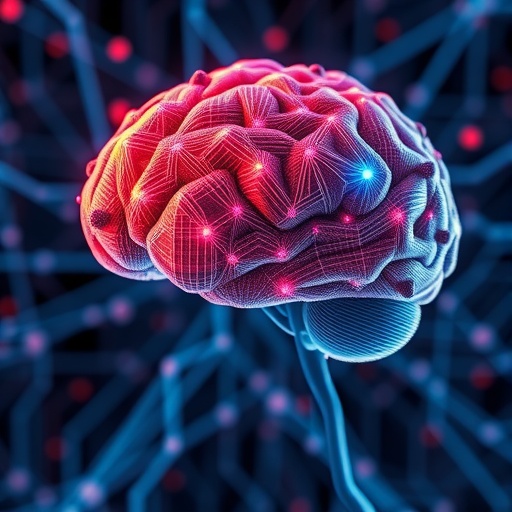As the demand for faster, smarter, and more energy-efficient computing systems escalates in tandem with the rise of artificial intelligence (AI), automation, and real-time data analytics, the limitations of traditional computing architectures become more apparent. Conventional systems rely heavily on sequential data processing and consume significant energy, posing critical challenges for scaling AI technologies. In response, neuromorphic computing has emerged as a revolutionary paradigm designed to mimic the human brain’s architecture and operational principles, offering a transformative approach to information processing that could reshape modern manufacturing and beyond.
Neuromorphic devices diverge fundamentally from classical computers by leveraging parallel processing mechanisms and adaptive functionalities reminiscent of biological neural networks. These systems are engineered to emulate the behavior of neurons and synapses, enabling them to learn, process, and adapt dynamically with striking efficiency. The inherent parallelism of neuromorphic architectures facilitates the handling of complex tasks—such as image recognition, pattern detection, and autonomous decision-making—far exceeding what conventional von Neumann architectures can achieve at comparable power levels.
A comprehensive review recently published in the International Journal of Extreme Manufacturing provides an in-depth examination of the latest technological strides in neuromorphic computing, particularly focusing on the integration of machine learning algorithms with innovative hardware platforms. Spearheaded by Professors Zhong Lin Wang and Qijun Sun from the Beijing Institute of Nanoenergy and Nanosystems, alongside Professor Jeong Ho Cho of Yonsei University, this analysis delves into the symbiotic relationship between algorithmic advances and device engineering critical to the field’s progression.
Central to their discussion is the embedding of diverse machine learning models—including Support Vector Machines (SVM), Artificial Neural Networks (ANN), Convolutional Neural Networks (CNN), Recurrent Neural Networks (RNN), and Reservoir Computing (RC)—directly onto physical neuromorphic substrates. These embedded systems harness the intrinsic learning capabilities of biological neurons, allowing neuromorphic chips to adaptively respond to fluctuating inputs, refine their internal states, and execute real-time data processing without reliance on traditional digital computation frameworks.
One of the most notable technical breakthroughs highlighted is the development of three-dimensional (3D) neuromorphic device arrays. Unlike planar architectures, these volumetric networks feature densely interlinked components designed to mirror the brain’s extraordinarily high connectivity and parallelism. This 3D integration significantly enhances data throughput and energy efficiency, positioning such devices as prime candidates for high-speed, low-power sensory and cognitive processing systems, with prototypes already demonstrating autonomous operation in artificial vision and tactile sensing applications.
The implications of neuromorphic computing for advanced manufacturing are particularly profound. By embedding cognitive processing capabilities within machines, neuromorphic systems empower manufacturing equipment to perceive their environment, learn new tasks autonomously, and execute decisions locally without dependency on cloud infrastructures. This autonomy drives new levels of operational efficiency, flexibility, and resilience, enabling smarter factories that adapt seamlessly to production variability while maintaining stringent quality control—all with markedly reduced energy footprints.
Despite the promising outlook, substantial challenges remain on the path to widespread commercialization of neuromorphic technology. Current neuromorphic chips require enhanced precision, reliability, and energy efficiency to meet the demanding standards of industrial applications. The review points to emerging materials research, such as substituting traditional insulating layers with advanced solid-state electrolytes like ion gels, as a pivotal strategy to overcome these obstacles by improving ion mobility and reducing power consumption at the device level.
Looking forward, ongoing research aims to miniaturize neuromorphic elements further and achieve their seamless integration into complex systems architectures. The goal is to assemble multi-functional neuromorphic platforms capable of sophisticated brain-inspired computing tasks, blurring the division between hardware and software, and between biological cognition and artificial intelligence. Such systems hold the potential to revolutionize big data analytics, human–machine interfaces, and interactive technologies through unparalleled energy efficiency and processing power.
The melding of machine learning algorithms with neuromorphic hardware creates exciting possibilities for artificial intelligence to evolve beyond current constraints. Neuromorphic chips can self-optimize by dynamically tuning their network parameters, effectively embodying forms of continual learning and environmental adaptation that are challenging for traditional AI models. This adaptive intelligence is particularly suited to the stochastic and noisy data environments typical of real-world applications.
Moreover, 3D neuromorphic ecosystems foster innovation in sensory processing, where artificial neural sensors equipped with embedded intelligence can provide highly precise and rapid feedback mechanisms. These systems mimic human perception pathways more faithfully than conventional approaches, enabling applications in robotics, autonomous vehicles, and wearable technologies that interact intuitively with complex stimuli and environments.
The review articulates how the convergence of neuromorphic hardware and machine learning is poised to catalyze a paradigm shift in computational science and engineering. By drawing inspiration from the efficiency of the brain’s information processing, researchers seek to transcend the limitations of Moore’s Law and the von Neumann bottleneck, delivering computing platforms that are not only faster and more power-efficient but also inherently more capable in handling unstructured, dynamic, and complex data streams.
As this multidisciplinary field progresses, collaboration across materials science, electrical engineering, computer science, and cognitive neuroscience is critical. The fusion of algorithmic ingenuity with cutting-edge device fabrication promises to unlock new frontiers in AI-enabled manufacturing and beyond, cultivating intelligent systems that learn and evolve with unprecedented autonomy and efficacy.
The pathway to fully realizing neuromorphic computing’s potential will demand overcoming technical hurdles and fostering scalable manufacturing techniques for neuromorphic chips. Yet, the accelerating pace of innovation and growing investment underscore the urgency and transformative potential of this domain. As the boundaries between biological and artificial cognition become increasingly indistinct, the future of computing stands to be redefined fundamentally.
Subject of Research: Neuromorphic computing and machine learning integration in advanced hardware devices for intelligent manufacturing and AI applications.
Article Title: Neuromorphic devices assisted by machine learning algorithms
News Publication Date: 4-Apr-2025
Web References:
Image Credits: By Ziwei Huo, Qijun Sun, Jinran Yu, Yichen Wei, Yifei Wang, Jeong Ho Cho, and Zhong Lin Wang*
Keywords: Neuromorphic computing, machine learning, artificial intelligence, 3D device arrays, solid-state electrolytes, brain-inspired computing, parallel processing, smart manufacturing, adaptive systems, ion gels, hardware-software integration




